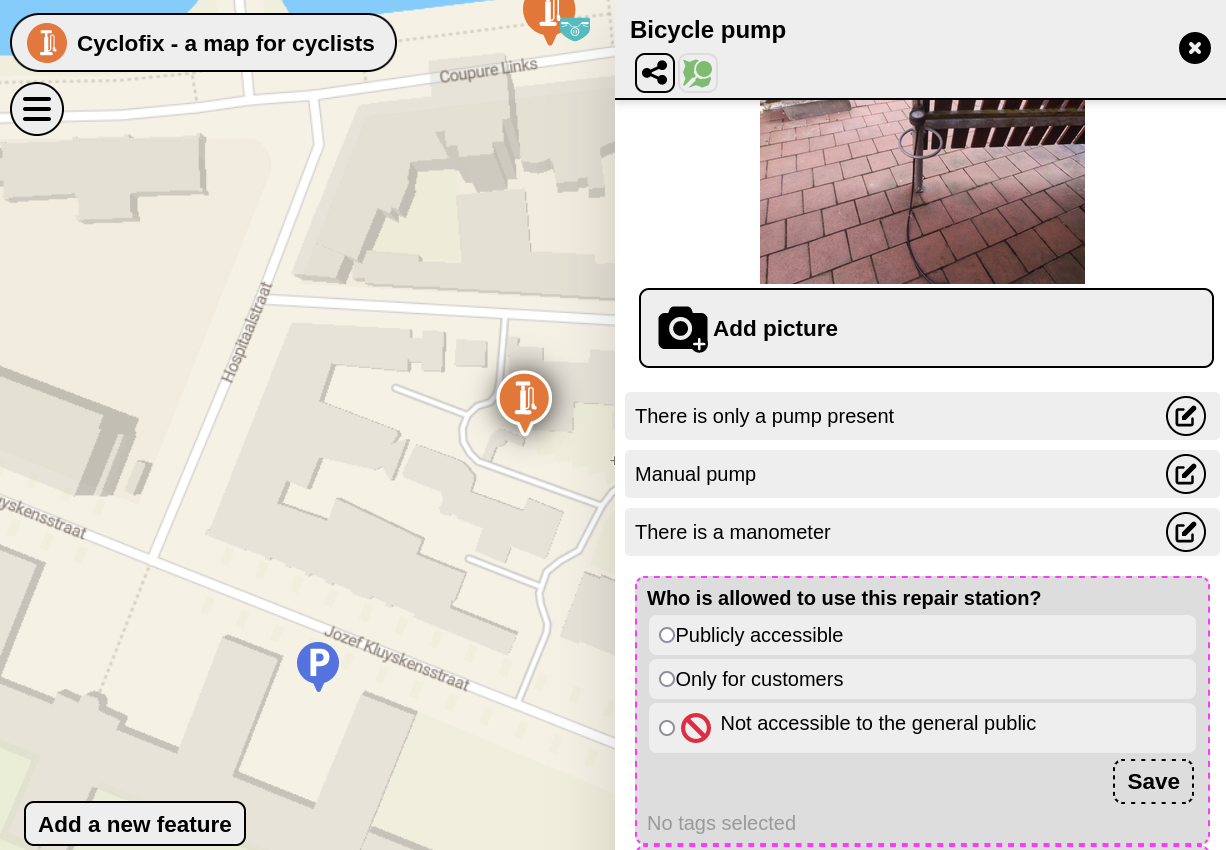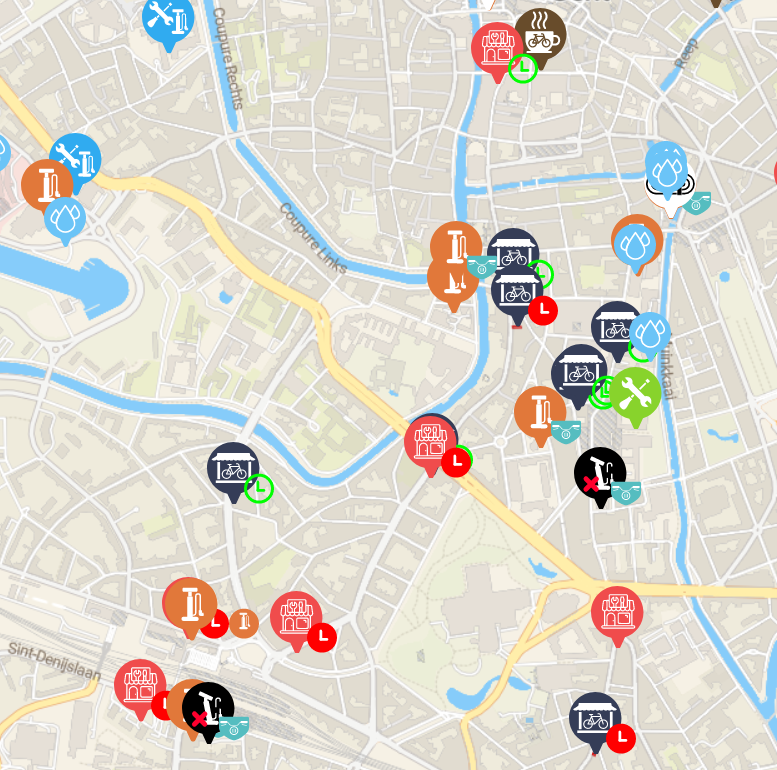
This place has three functions:
- It is a shop, selling boardgames
- It is a café, where one can drink a tea (while testing one of the board games)
- It is a social inclusion project for people with a mental disability
In a traditional system with layers, one would either have to choose the most fitting layer (e.g. the layer `pub`, `shops` or `social facility`? ) losing the multi-facetted aspect of the place.
Another approach could be to add it to all three layers, duplicating the data. However, this makes maintaining the data harder.
 Data can also be loaded and visualised from external sources. No changes can be made to the data in that case.
# MapComplete _does_ have layers
A layer in mapcomplete describes a single type of object, e.g. _shops_, _toilets_, _benches_, _public bookcases_.
A layer tells us:
- What features to load from OpenStreetMap - thus what attributes the displayed data should have
- (Or where to find the data if we are using an external datasource)
- How these should be displayed on the map
- What should be shown in the popup...
- ... and what questions should be asked
- How to create a _new point_ onto the map
# MapComplete does have themes
A _theme_ is a **collection of layers**, with a title and a description.
For example, [cyclofix](https://mapcomplete.org/cyclofix) has many bicycle-related layers (of which items are shown on the map) and an introduction.
Data can also be loaded and visualised from external sources. No changes can be made to the data in that case.
# MapComplete _does_ have layers
A layer in mapcomplete describes a single type of object, e.g. _shops_, _toilets_, _benches_, _public bookcases_.
A layer tells us:
- What features to load from OpenStreetMap - thus what attributes the displayed data should have
- (Or where to find the data if we are using an external datasource)
- How these should be displayed on the map
- What should be shown in the popup...
- ... and what questions should be asked
- How to create a _new point_ onto the map
# MapComplete does have themes
A _theme_ is a **collection of layers**, with a title and a description.
For example, [cyclofix](https://mapcomplete.org/cyclofix) has many bicycle-related layers (of which items are shown on the map) and an introduction.


